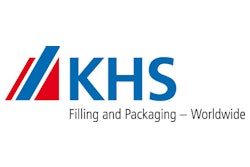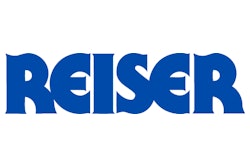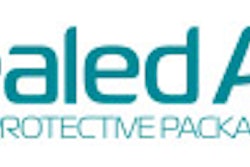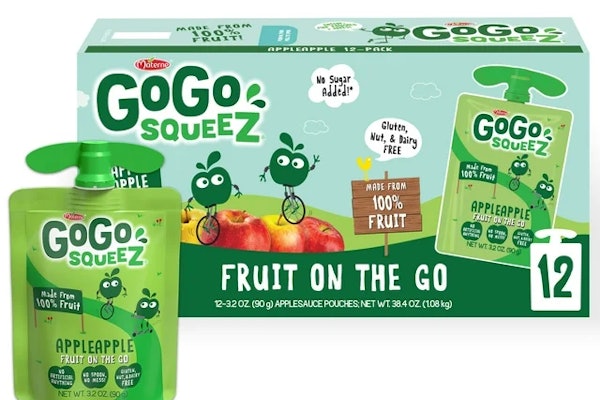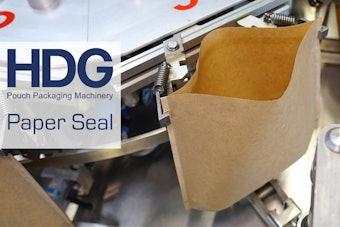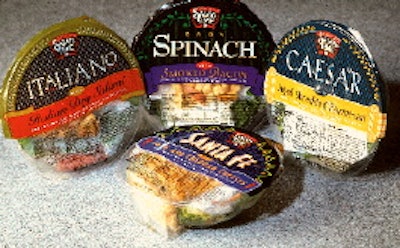
In the always intriguing awards competition sponsored by the Flexible Packaging Assn., eight companies were awarded 12 1996 Top Packaging Awards for outstanding achievements in flexible packaging.
"Flexible packaging is solving some of the most esoteric packaging demands in his-tory," said FPA president Glenn E. Braswell in announcing the winners. "These packages addressed an obstacle course of challenges to bring these products to market, or, in some cases, even to make these markets possible."
Six of the 12 winners were food items. But what a wide variety of food types they were, and what a broad range of packaging technology they represented. (For a look at the other six FPA winners, see stories on p. 60 and p. 78).
Even the U.S. Army got in on this one. An oxygen absorbing pouch for bread (1) is among the latest entries in the Army's MRE (Meals-Ready-To-Eat) program (see Packaging World, Nov. '96, p. 62). The premade pouch lets the Army eliminate an oxygen-scavenging sachet in its packaged bread without reducing the current three-year shelf life. The elimination of the sachet means it can no longer be accidentally consumed. Also gone are added cost, labor and waste.
Cadillac Products (Troy, MI) makes the pouches by first incorporating Amoco's (Chicago, IL) Amosorb® oxygen absorbing material into the sealant layer. Though specific details on what Amosorb is are not available, Cadillac indicates it's added to the sealant layer in a coextrusion process. The resulting substrate is mounted on a tandem laminator. In its first station, a reverse-printed 48-ga polyester is extrusion laminated to .00035" foil. In the second station, the Amosorb sealant coextrusion is adhesive laminated and becomes the innermost layer. Conventional pouch-making follows.
Sterling Bakery of Sterling, TX, has the current contract for the Army's MRE breads and will remain the vendor when the Army gives final authorization for use of the new oxygen scavenging pouch. Cadillac, which worked with both Amoco Chemical and the U.S. Army Natick RD&E Center in developing the pouch, is now sampling and testing other applications of what it calls its ABSO2RB(TM) technology.
"This product can be custom formulated to provide a shelf life from one month to three years," says Cadillac's Brian Votaw. It's a matter of calculating the oxygen absorption rate necessary based on a variety of product/package factors, he adds. Votaw says he expects to see an ABSO2RB package on retail shelves within the next six months.
Super salad bowl
Last year's FPA competition produced no less than three winners in the fresh-cut produce category. This year only one fresh-cut salad got the nod from the judges: SaladTime® SaladBowls(TM) (2) from Tanimura & Antle of Salinas, CA (see PW, July '96, p. 56). It was recognized partly for its rigid bowl format, whereas flexible packaging materials are used for most fresh-cut produce packages that prolong refrigerated shelf life by allowing produce to respire at an appropriate rate.
The package includes salad mix, utensils, napkins, dressing, croutons, and meat or cheese. Four varieties, available nationwide, sell for about $3.50 each. Bowls are thermoformed of polyvinyl chloride by Merrill's Packaging (Burlingame, CA). After salad ingredients are loaded manually, the bowls are fed to a rotary sealing system from Orics Industries (College Point, NY). The machine heat seals and trims lidding material from rollstock. The lidding is applied in register so that elaborate graphics can appear at their best.
Aside from providing visual impact, the lidding material must control permeability, since the PVC bowl is highly impermeable. Lidding is supplied by Printpack (Atlanta, GA). It's a two-layer coextrusion of polystyrene and ethylene vinyl acetate. PS provides the stiffness and the appropriate level of gas permeability, while EVA brings heat sealability. Thickness, depending on which of four salad items is inside the bowl, is in the range of 21/4 to 21/2 mils. Shelf life for SaladTime SaladBowls is two weeks from date of packaging.
The lidding is peelable, has an antifog feature, and for a time was surface printed flexographically in eight colors. But recently surface printing gave way to a reverse-printed polypropylene that is adhesive-laminated to the two-layer coextrusion. In this structure, says T&A's Leonard Batti, the graphics are better protected from any kind of damage during transit. Shining through the clear PP, the graphics "really pop," adds Batti.
Microwave magic
Printpack scooped up two additional FPA awards for food packages this year, one of them for a patented microwave susceptor called MW Wrap(TM). Source reduction and consumer convenience stand out as the primary attributes of the susceptor, used for 6.1-oz offerings of Healthy Choice® Hearty Handfuls(TM) Meals to Go(TM) (3).
The approximately 1.7-mil susceptor consists of cellophane on the outside that's adhesive-laminated to metallized heat-sealable polyester. Printpack converts the structure, shipping 9.5"-wide unprinted rollstock to Omaha, NE-based ConAgra Frozen Foods. ConAgra "perforates" the rollstock with pinholes before product is packaged. This lets steam escape during microwaving and allows the bread to brown.
ConAgra has marketed Hearty Handfuls since 1995, but until 1996 each pocket-type sandwich was sold in a film overwrap with a knocked-down paperboard sleeve susceptor. Both the susceptor and the overwrapped meal were packed into a folding carton. Consumers had to open the film overwrap, remove the sleeve susceptor, assemble the susceptor, insert the product into the susceptor, place the susceptor in the microwave, cook for two minutes, rotate the product, then cook for another two minutes.
Last June, nationwide retail outlets began selling the $1.99 product in the MW Wrap susceptor pouch within an outer printed carton. Unlike the previous sleeve, this "all-over" pouch completely contains the product. The consumer no longer must put the pastry into the sleeve. Instead, the pouch is simply popped into the microwave. What's more, the pouch does not have to be opened before heating. Cooking time remains four minutes, though turning the pouch in the microwave is optional.
Printpack estimates that the pouch reduces material weight by more than 40% compared to the previous susceptor. It also contends that the susceptor improves packaging line speed efficiency.
Cathy Shapiro, ConAgra Frozen Foods' group leader, tells PW, "We've had excellent response from consumers. It's one-step cooking that is convenient for consumers, the packaging is simpler and there's economic and source reduction advantages for us and for consumers. We estimate that as a result of the switch in susceptor material, we've helped phase out 425ꯠ pounds of material that had been landfilled."
Bags exude shelf appeal
Printpack's third food package to win an FPA award is a striking potato chip bag for Terra Chips® (4), marketed by Brooklyn-based Dana Alexander, Inc. The package represents a change from gravure to flexographic printing, but the graphic appeal of the bag isn't one bit diminished. If anything, it's been enhanced.
Printpack reverse-prints the graphics in eight colors, three line and five process colors, on 70-ga oriented polypropylene. That structure is adhesive laminated in a single pass on a tandem laminator to 60-ga high-barrier metallized OPP. On the inside of the structure is a layer of DuPont's Surlyn® for sealant. Total thickness is approximately 2.7 mils. Printpack ships rollstock to Dana Alexander for vertical form/fill/sealing. According to the converter, Dana Alexander saves $8ꯠ per item design in prepress art costs by switching from gravure to flexographic printing.
Before working with Printpack, Dana Alexander manually applied pressure-sensitive labels to a pre-made bag. "We used labels because we could get decent reproduction print quality with them, but applying them was labor-intensive," explains company president Dana Sinkler.
"Not only did we want to eliminate the labor costs of applying labels," says vice president Alexander Dzieduszycki, "but the labels themselves were expensive. We had so much money wrapped up in bags and labels it was ridiculous."
Dana Alexander then turned to a flexographic printer in the U.S., "but the quality was horrible," says Sinkler. Afterwards, the company hooked up with a U.K.-based broker who worked with a gravure printer in Italy.
"They were able to run our smaller volumes," relates Dzieduszycki, "and they helped us with the die and cylinder costs." Still, Dana Alexander wasn't completely satisfied. "Lead times were usually eight to 12 weeks, and we had to pay a premium for a quick six-week turnaround," Sinkler notes. Another difficulty was that product shipments to the West Coast of the U.S. resulted in some bags actually "popping" open at high altitudes because of an inferior sealant. This handcuffed Dana Alexander's distribution plans.
"By that point, we had built up our overall volume to levels where the larger U.S. converters would talk with us, and we began to work with Printpack in late '95," recalls Dzieduszycki.
Printpack representative Bill Love admits the job was quite a challenge. "This particular package is difficult to print because of the great range of colors of dark and light reds and yellows. The first time we ran it, it wasn't a big success. The problem was more of an issue with the separations we were receiving.
"We worked with our separator, Deluxe Engraving (Cincinnati, OH), and in early '96, we printed the material a second time and hit it right on the button," he explains. "We didn't need new equipment to run it, either. We do the job at around 450 feet-per-minute, which is pretty good for a complex job like this."
Today, Dana Alexander is rather happy with its arrangement with Printpack. The converter prints all 13 chip bag offerings. Shipments are delivered in four to eight weeks, but timing isn't as big a concern as it once was, according to Dzieduszycki. That's because the converter helps manage film inventory and can keep the proper amount of film on hand to meet its customer's needs.
"They've minimized the amount of time we need to manage the film," says the Dana Alexander vp. "And it's a lot less expensive to have it flexo printed rather than gravure. Also, it's far less costly to have the material shipped to us from a U.S. printer than it is from Italy."
Sinkler also points out that the Surlyn sealant layer withstands the high altitudes, enabling Dana Alexander to expand its distribution on the West Coast. That's increased sales, though specifics weren't divulged. The Surlyn layer has also helped Dana Alexander improve its vf/f/s speed.
Dzieduszycki explains, "We were having some hot tack difficulties with some of our other sealant materials before we used the Surlyn. We tried metallocene for our larger 10- and 12-ounce bags, but when we ran them at speeds above 30 bags a minute, there wasn't enough time for the seals to cool properly. Product would fall right out of the bottom of the bag."
The company's current packaging speeds don't exactly break any records, but they do satisfy production needs. A 3/4-oz airline bag is filled at 75/min, the 6-oz bag at 70/min, and 10- and 12-oz sizes, for foodservice accounts and club stores, at 45/min.
Beefing up shelf life
Among the six food packages to win FPA awards, two involved films from Cryovac (Duncan, SC). One such film is Lid 1050, a coextruded barrier to both oxygen and moisture. Combined with a special barrier tray, it provides up to a 10-day shelf life for fresh ground beef packs (5), an extension of several days compared to meat that's ground and packed in-store.
The new package still has the store-wrapped look that consumers have come to expect, but it's vacuum/gas flushed with oxygen and carbon dioxide. The CO2 extends shelf life by inhibiting microbial growth, and the oxygen allows the meat to retain its healthy red "bloom," says Ray Moran, vice president of Los Angeles-based United Food Group, one of the first users of the new lidstock.
"It's the first time we've been able to offer a fresh ground beef patty with a 10-day shelf life," says Moran, who notes that the patties were introduced in March '96 and sold in Southwest supermarkets under the Moran's Ground Beef and Miller Meat Co. labels. United also uses the trays and Lid 1050 for ground beef that has not been formed into patties.
Moran says retailers like the package because it allows them to restock the meat case during the evening hours when in-store butchers aren't working. He claims the package has increased sales, though specific figures weren't available.
The star of the ground beef package is Lid 1050. Cryovac introduced the 1-mil coextruded structure as a replacement for a 3-mil material offered earlier. The new structure provides increased clarity and anti-fog protection under refrigeration, while maintaining the barrier characteristics of the previous structure. Moran confirms that the new film is much clearer, and costs less, too. Cryovac declined to identify material specs on the lidstock or tray.
For its part, the foam plastic tray, which is not new, has a special barrier film laminated to the tray's inner surface. Lidstock is heat-sealed to flanges around the edges of the tray.
The meat is packed on a vacuum/gas-flush tray sealing machine from Robert Reiser & Co. (Canton, MA) that was specially modified to handle Cryovac's Lid 1050.
The trays are manually loaded with product, evacuated of ambient air, gas-flushed and sealed. Then the lidded trays are die-cut from the lidding web. The special modification to the Reiser unit consists chiefly of a shrinkback process that heats the small margin of excess film around the tray. That causes the film to shrink back to the tray, which results in a cleaner-looking package. Packaging is done four-up for a total throughput of about 60 packs/min, according to Moran.
Pouchstock of the future?
Cryovac's other winning entry is the package used for Dippin' Dots (6). This ice cream novelty is billed as the ice cream of the future, but FPA judges felt the packaging material is equally futuristic.
Dippin' Dots are tiny spheres of ice cream flash-frozen in liquid nitrogen, hand-dispensed by vendors at amusement parks and tourist attractions such as Opryland and Disney World. When Paducah, KY-based Dippin' Dots wanted to introduce portion packs to expand distribution and reduce giveaway, it was difficult to find a film that wouldn't flex-crack-even shatter-at the product's required filling temperature of
Cryovac (Duncan, SC) supplied a 3.5-mil proprietary laminated structure that holds up during filling and withstands distribution temperatures of
Successfully test-marketed in August '96 at Opryland, the package "allows us to serve in those areas where open-air dipping isn't allowed by local health regulations," says special projects manager Jim Moss. The bag also paves the way for the company to develop the vending market once it completes work on a special low-temperature vending machine. The 2.43-oz pouches typically retail for $2 to $3, depending on the sales outlet.
Cryovac won't discuss the details of the structure, except to say that it has a very unique linear low-density polyethylene inner heat-seal layer. The company also says special extrusion techniques were used to make such a cold-resistant film. Bags are flexo-printed in eight colors, including a special silver that gives a metallic appearance. There are 12 product varieties.
Dippin' Dots uses a Klockner Bartelt (Sarasota, FL) horizontal form/fill/seal machine to form the rollstock into stand-up pouches at speeds of 3ꯠ/hr. The machine perforates the top of the pouch to produce a tear-off strip. The strip also functions as a vent for the trace amounts of nitrogen that are packaged with the product. The holes allow the nitrogen to vent freely. Moss acknowledges barrier is not a critical issue, since the holes allow two-way air movement.
It's difficult to assess the economics of the pouchstock since it's a new package, says Moss, but he does say that it's 75% cheaper than premade bags that Dippin' Dots had tested.



